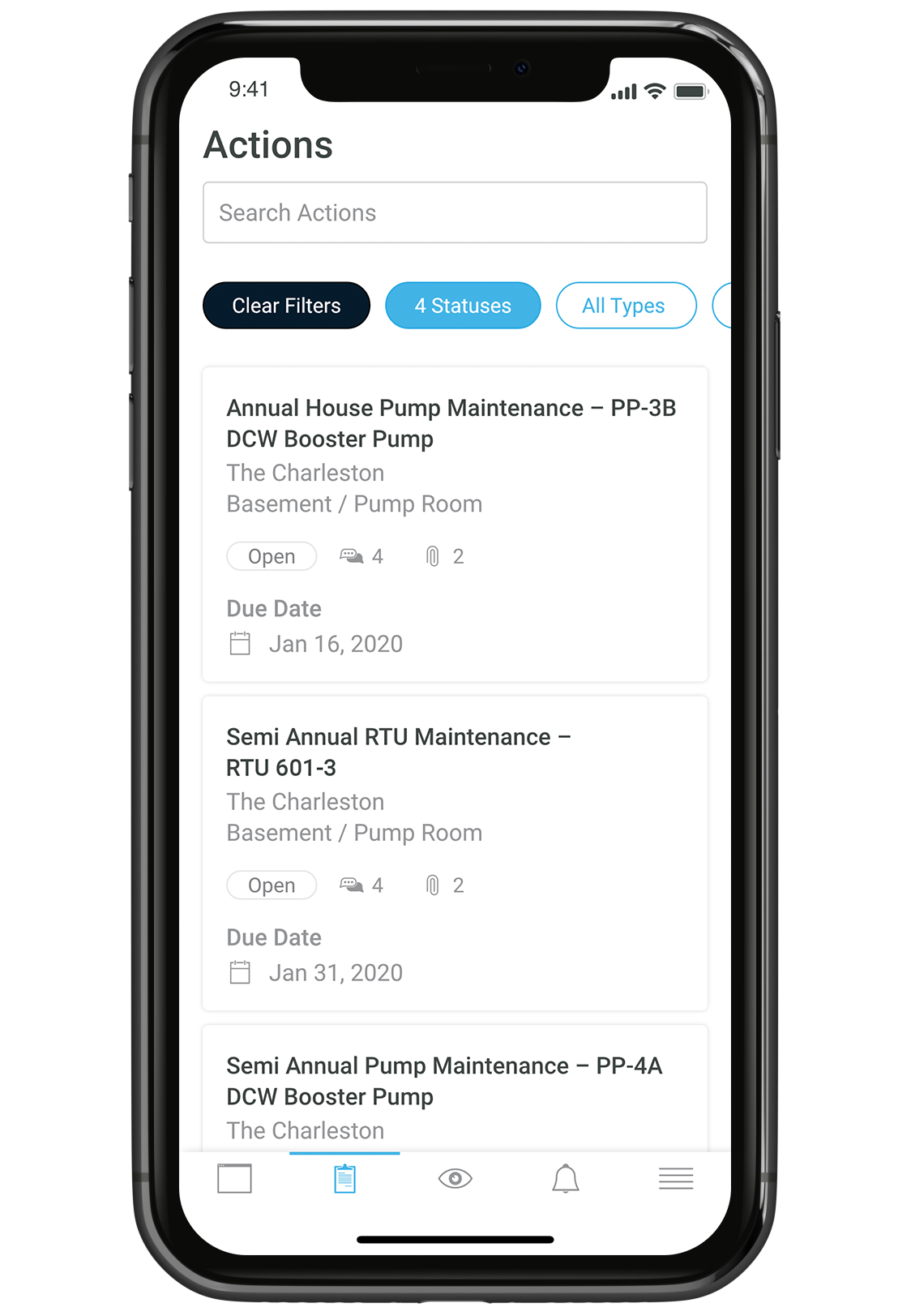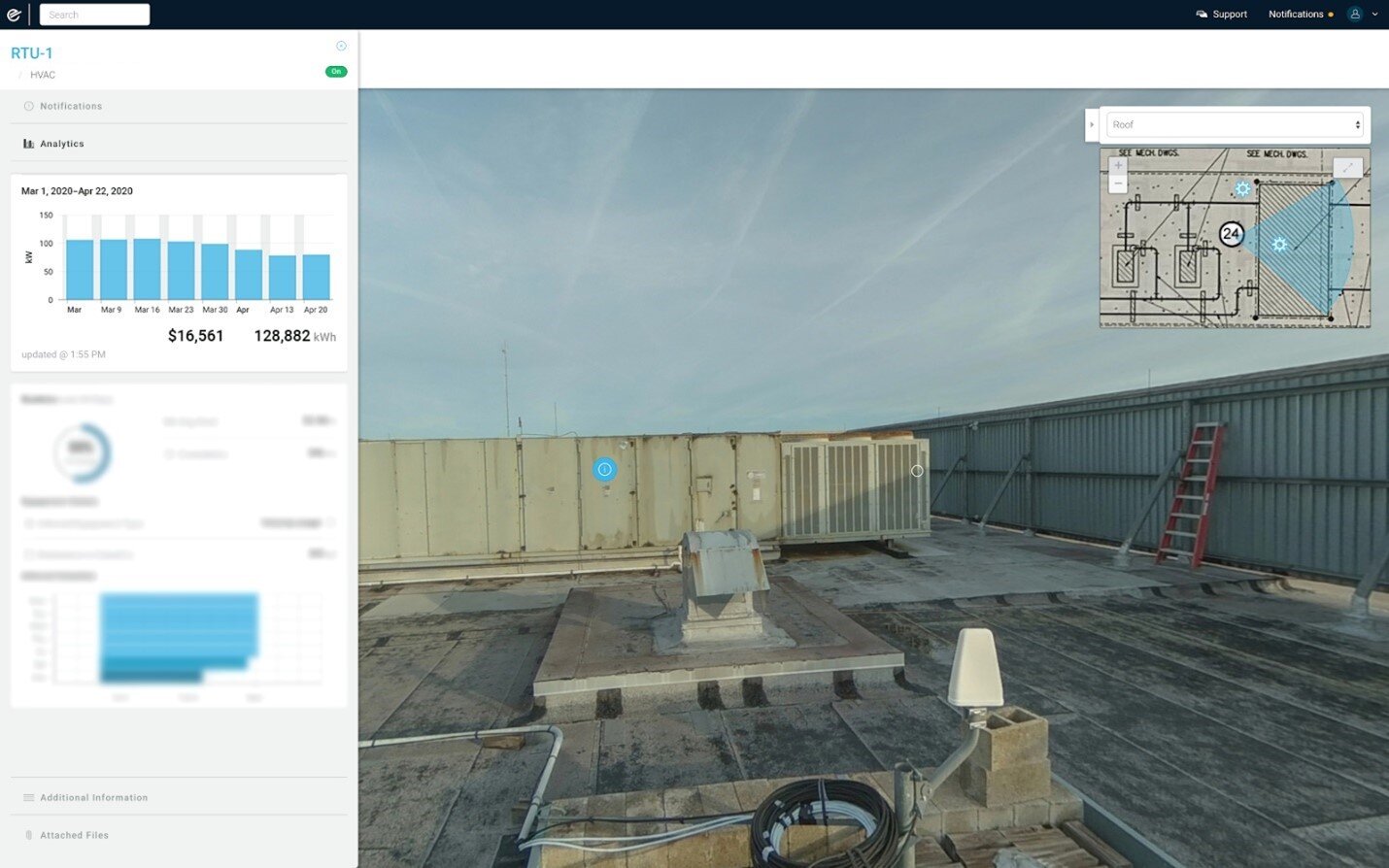This has proven to be one of the most challenging budgeting seasons commercial real estate has faced. After several months of grueling meetings, asset managers, engineers and property managers are starting to be able to take a breath and take stock of what just happened.
This budgeting season was so tough because, according to Deloitte’s 2021 Commercial Real Estate Industry Outlook, owners and operators plan to reduce costs by 20% on average. To that end, “embracing a digital transformation is becoming a business imperative… optimizing operational costs using technology is being looked at to improve resilience going forward.”
However, comparing technology solutions on an apples-to-apples basis continues to be difficult. Expertise in financial analysis, property management, or even building engineering doesn’t necessarily translate to understanding how technology could be deployed to streamline work and reduce costs.
Some portfolios have dedicated innovation teams responsible for technology evaluation. Unfortunately, as we’ve explored before, this can swing the pendulum too far and result in a disconnect between technical evaluators and the end users in the organization.
Where are commercial real estate professionals to turn? Unfortunately, for some reason, social media shares of “technology landscapes” haven’t translated into genuine understanding or confident decision making. Weird.

There are too many categories to cover in this article, but the aim is to illuminate and differentiate solutions that focus on operations and maintenance, somewhere between the Property Management and Building Automation & IoT categories above.
Preventative Maintenance
It’s been reported that 87% of maintenance is done reactively. Everyone understands the high cost of deferred maintenance conceptually but putting thought into action isn’t easy when there are more immediate concerns and priorities.
Whether maintenance is outsourced to vendors, managed purely in the head of an engineer, or ignored entirely, it is one of those things that must be paid for, one way or another. To better ensure wrenches are being turned and that costs are being tracked, preventative maintenance software has been made available.

Sometimes this software comes in the form of a stand-alone solution, other times it’s part of a property management system.
In general, it’s better to adopt more comprehensive platforms for broad categories like property management, operations & maintenance, leasing, and tenant experience.
However, it’s curious that preventative maintenance ended up in the domain of property management and that technology landscapes like the one above skip basic operations and go straight to building automation & IoT.
Ultimately, property management systems are designed to reduce friction between tenants and the building. While enabling tenants to generate work orders through an app is a valuable use case, preventative maintenance will always be an afterthought to platforms that don’t have operations and maintenance (O&M) in their DNA.
For instance, preventative maintenance software should be surrounded with other components critical to O&M such as asset tagging, documentation, rounds, and capital planning. These concepts are foreign to a property management system and generally ignored by strict “building automation & IoT” platforms.
Tenant Submetering
Just like preventative maintenance, tenant submetering (at least for most office portfolios) is one of those activities that has to be done, one way or another. It can be outsourced entirely for a premium or done in-house on clipboards and spreadsheets.

Of course, technology can streamline and automate much of this process. These solutions come in a variety of options.
The first and most straightforward strategy is to replace the clipboard for meter reading software on a mobile app. While the meter readings will still be manual, this eliminates the need to transcribe numbers into a spreadsheet and/or accounting software. It also stores readings so that any disputes with tenants can be quickly resolved.
Another option is to upgrade tenant submeters to digital, remotely readable devices. While this is often a large capital expenditure up front, it does effectively automate the entirely process, from data collection to bill generation and integration with accounting.
In either case, these have been deployed widely as stand-alone solutions. This doesn’t have to be the case.
Once we take a step back and make room for an operations and maintenance category of the technology landscape, it quickly becomes obvious that maintenance rounds and meter readings are essentially the same type of activity performed by the same people. Why not put them into one platform?
Energy Management & ESG Reporting
Energy management is one of the most easily confused subjects in the entire real estate technology landscape. Whenever there’s uncertainty, it’s helpful to categorize solutions by those that digitize necessary workflows and those that optimize performance.
For example, energy budgeting, benchmarking compliance must be performed no matter what. Increasingly, ESG reporting is being required to secure either private or public investment.
Many portfolios get by with spreadsheets and apply basic rules of thumb, like a 3% annual increase in utility costs. While that doesn’t take very long, it isn’t particularly accurate or helpful.
There are a few avenues to digitize this process and make it more data driven. The easiest and least expensive option is to connect the building’s utility account to software so that bills are automatically pulled in, trended over time, and analyzed. Of course, this only provides one data point per month, so many portfolios deploy simple hardware devices to track real-time data from the building’s utility meters.
Either way, there’s no real reason that these utility management services should be separated from other operations and maintenance. The two are intrinsically related and separating them only serves to silo sustainability teams from operators.
With utility data in a software, things like budgeting and benchmarking compliance can be completely automated. Ultimately however, this answers the “what,” not the “why.”
To get into performance optimization, that’s finally where we land in the Building Automation & IoT section of the technology landscape.
Performance Optimization
Before we dive into specifics, there are a few concepts to understand that will help with technology evaluation. First, it makes no sense to jump straight to performance optimization before the workflows mentioned above are both digitized and centralized in one platform.
Second, as we covered in Is it Possible to Scale Smart Buildings, every building is different. There is no silver bullet and flexibility will be required to optimize performance across an entire portfolio.
With those concepts in mind, it’s important to understand the different approaches to performance optimization and their pros and cons.
BMS/BAS Analytics and Automation
Building management systems (BMS) are designed to use sensors placed throughout a building to control equipment, usually with a focus on HVAC.
The pros of using these systems as the foundation for performance optimization is that very little additional hardware needs to be installed to bring the IoT data into the cloud. Furthermore, if the rules for how to control equipment have been mismanaged over time, there can be a large payback on energy efficiencies.
The cons of relying on this approach is that many properties, especially multifamily and industrial assets but also many offices and hotels, don’t have a BMS installed. Even in buildings that do have a BMS, the difference between scopes, manufacturers and networking protocols can stifle a broad rollout. In addition, using cloud-based controls both cuts engineers out of agency over their building and presents serious cyber security concerns.
Equipment Monitoring
Also known and equipment submetering. Sensors can be mounted next to electrical distribution panels to track the performance of individual pieces of equipment.
The pros of using stand-alone sensors is that this approach can be deployed in any asset. In addition, equipment monitoring is generally able to deliver broader value, such as predictive maintenance or tracking mean time to repair, than primarily just the energy savings seen from BMS optimizations. Another pro is that it eliminates the complexity of integrating with a range of different manufacturers and networking protocols.
The cons of equipment monitoring are that deployments require more hardware and time on site for installations.

Environmental Monitoring
COVID-19 has been a catalyst for interest in indoor environmental quality. There are a range of sensors, many of them wireless, that can monitor potential hazards to tenant wellness in real time.
The pros of deploying IoT sensors to track data streams like air quality, moisture, occupancy, and temperature is that installation is often very straightforward. These sensors can be used to demonstrate the safety of a space or to mitigate the risk from issues like leaks.
The cons of the explosion in new sensors is that if operators are not careful, they can end up with a new vendor and software for each date stream.
Conclusion
The market for technology can be confusing and overwhelming. The “technology landscapes” that are often promoted don’t necessarily match how commercial real estate professionals think about their business.
To meet the necessary goals of significantly reducing operating expenses, technology will have to be brought in quickly and efficiently. The first step should be to digitize and centralize all the workflows necessary to own and/or operate buildings, including preventative maintenance, tenant submetering energy management, and reporting.
Only then does it make sense to dive into performance optimization. From the beginning of that journey, it’s important to understand the pros and cons of an integration-based approach, equipment monitoring and environmental monitoring. None are a silver bullet, so flexibility will be paramount. Fortunately, the first step of digitizing workflows should also help create a dynamic strategy for performance optimization.
Enertiv is an integrated operations and maintenance platform designed to “do it all.” Watch a demo video today to see how it works.




.jpg)
.jpg)